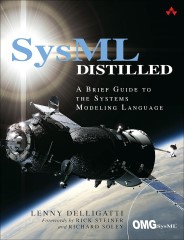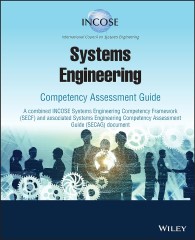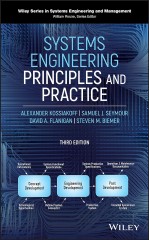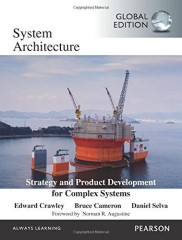In the multifaceted world of engineering, where distinct disciplines like electrical, mechanical, and software engineering each play their pivotal roles, Model-Based Systems Engineering (MBSE) emerges as the integrative force that binds these diverse fields into a cohesive whole. Unlike traditional domain-specific engineering, MBSE isn’t confined to a particular niche; instead, it provides a comprehensive overview, facilitating enhanced communication and seamless integration across various engineering disciplines.
A fundamental revelation in understanding MBSE is recognizing that unlike conventional domain engineering, which often relies on tangible, visual models (like schematics in electrical engineering or blueprints in mechanical engineering), MBSE operates fundamentally differently. Instead of a single, static visual representation, MBSE utilizes a dynamic set of interlinked models that can only be “viewed” through multiple specific perspectives or views. Each view within MBSE is designed to reveal different aspects or functionalities of the system, addressing the complex nature of modern engineering projects.
This approach marks a significant departure from traditional methods, offering a unique vantage point that considers the system as a whole rather than in isolated parts. By prioritizing this holistic approach, MBSE helps identify gaps, risks, and opportunities much earlier in the design process, fostering a more robust and integrated development lifecycle. In this blog, we will delve deeper into how MBSE serves as the backbone for integrating multiple engineering disciplines, ensuring that every piece of the system puzzle fits perfectly within the grand scheme. This exploration will not only highlight the strategic benefits of MBSE but also its indispensable tools, methodologies, and the pivotal role it plays from the inception to the culmination of engineering projects.
Further reading: Best MBSE Books in the Market.
Table of Contents
- Section 1: Fundamentals of Model-Based Systems Engineering (MBSE)
- Section 2: Defining the “System of Interest” and System Boundary in MBSE
- Section 3: Role of Systems Engineering in MBSE
- Section 4: The Relationship and Differences between Project Management, Systems Engineers, and Domain-Specific Engineers
- Section 5: MBSE Tools and Languages
- Section 6: The Concept of the Digital Thread in MBSE
- Wrap Up: Embracing the Future with Model-Based Systems Engineering (MBSE)
Section 1: Fundamentals of Model-Based Systems Engineering (MBSE)
Model-Based Systems Engineering (MBSE) is built upon the foundation of leveraging advanced modeling techniques to enhance the understanding, development, and documentation of complex systems. Unlike the document-based approaches historically prevalent in engineering, MBSE provides a more integrated and coherent structure for managing system complexities across various disciplines. Here, we explore the core aspects of MBSE, outlining its advantages over traditional methods, and its inherent challenges.
The Shift from Document-Based to Model-Based Approaches
Traditionally, engineering projects relied heavily on a document-based approach where all system data and processes were captured in text-heavy documents. This method, while straightforward, often led to inconsistencies and inefficiencies, particularly as systems grew in complexity and size. Document-based approaches made it challenging to maintain a unified vision of the system, as updates and changes could lead to discrepancies across various documents.
In contrast, Model-Based Systems Engineering (MBSE) employs a structured framework of models that not only encourages but necessitates consistency and synchronization across all stages of the system lifecycle. The shift to MBSE addresses several critical limitations inherent in document-based methods:
- Enhanced Clarity and Visualization: MBSE allows for the use of graphical representations and simulations, providing intuitive insights into system functionalities and interactions. This visualization helps in mitigating misunderstandings and provides a clear communication tool across diverse teams.
- Consistency and Synchronization: Since the central system model is shared and accessible, MBSE ensures that any modification made in one part of the model is automatically reflected across all related elements, maintaining consistency and reducing the likelihood of errors.
- Ease of Updates and Maintenance: Model-based designs facilitate easier updates and revisions, as changes are centrally logged and distributed across the model, streamlining the update process and ensuring all team members have the latest information.
- Automation and Analysis Capabilities: MBSE supports various tools that automate routine tasks and complex calculations, enhancing the efficiency and accuracy of system analysis and validation.
- Collaboration Enhancement: With models that can be simultaneously accessed and edited by different teams, collaboration becomes more streamlined, integrating inputs from various specialties seamlessly.
Challenges with MBSE Implementation
MBSE marks a significant shift away from traditional document-centered systems engineering, prioritizing the generation, evaluation, and distribution of models to guide the system development journey. This approach not only pledges improved clarity and collaboration among stakeholders but also aims to simplify design workflows, reduce errors, and facilitate smooth adjustments.
However, adopting MBSE isn’t just about upgrading tools or protocols; it signifies a profound transformation in business practices, requiring a deep understanding of an organization’s goals, capabilities, and current operations. Too frequently, organizations hastily embrace MBSE influenced by industry currents or the appeal of modernization, without fully grasping their specific needs or devising a strategic rollout plan. Unfortunately, this rushed approach often results in unsatisfactory results, wasted resources, and persistent uncertainty about the effectiveness of MBSE.
While the advantages of Model-Based Systems Engineering (MBSE) are clear, especially as the system’s complexity increases, the approach is not without its challenges. Implementing MBSE requires a shift not only in tools and processes but also in mindset and culture within the organization, which can pose significant hurdles:
| Challenge | Description | Potential Solutions |
|---|---|---|
| Learning Curve and Complexity | MBSE requires team members to adapt to new tools and a model-centric mindset, which can be complex and time-consuming. | Provide comprehensive training sessions and gradual integration into current projects to ease the transition. |
| Initial Setup and Integration Costs | Switching to MBSE can be expensive due to costs associated with purchasing new software tools and training staff. | Plan for a phased implementation and budget allocation, seeking ROI forecasts to justify upfront investments. |
| Ongoing Maintenance of Models | Models require continuous updates to accurately reflect the evolving system, demanding extra resources and diligence. | Implement regular review and update cycles and utilize automated tools to aid in maintaining model accuracy. |
| Tool and Methodology Compatibility | Choosing appropriate modeling tools and methodologies that integrate seamlessly with existing systems can be challenging. | Conduct thorough research and trials to select tools that best fit organizational needs and ensure compatibility. |
While MBSE presents a paradigm shift in the way complex systems are engineered, offering substantial improvements over traditional methods, it also demands careful consideration and management of its challenges. Understanding these fundamentals is crucial for any entity embarking on the journey of implementing MBSE to harness its full potential effectively.
For further reading: The Great Divide: When MBSE Promises Meet Engineering Realities
Section 2: Defining the “System of Interest” and System Boundary in MBSE
In Model-Based Systems Engineering (MBSE), one of the fundamental steps in the development process involves precisely defining the “System of Interest” (SoI) and its boundaries. This clarity is critical as it influences how the system is analyzed, designed, and integrated, ensuring all stakeholders have a unified understanding of the scope and reach of the project. This section explores the importance and process of delineating the SoI and establishing its boundaries within MBSE.

Understanding the System of Interest
The System of Interest (SoI) refers to the specific system or component that is the primary focus of the engineering effort. It is what the project aims to develop, enhance, or expand. In MBSE:
- Clarification of Objectives: Clearly defining the SoI helps align the project objectives, specifications, and requirements from the outset, ensuring all team efforts are directed toward a common goal.
- Scope Definition: It establishes the scope of the project, helping to delineate what is included within the project parameters and what falls outside, ensuring resources are allocated efficiently.
Establishing System Boundaries
System boundaries define the physical, conceptual, or logical limits of the SoI. These boundaries are essential for:
- Interface Management: They help identify how the system interacts with other systems or the environment, which is crucial for designing interfaces and integration points.
- Risk and Impact Analysis: Understanding where the system begins and ends aids in assessing potential risks and impacts, both within the SoI and in its interactions with external entities.
- Resource Allocation: Boundaries help in accurately determining the resource needs specific to the SoI, facilitating better planning and utilization.
In MBSE, defining these boundaries involves:
- Collaboration among Disciplines: Systems engineers, project managers, and domain experts collaborate to establish these boundaries based on technical, economic, and operational considerations.
- Iterative Refinement: Boundaries may be refined as the project progresses and more information becomes available or as project requirements evolve.
Documenting and Modeling the System Boundaries
Model-Based Systems Engineering (MBSE) methodologies utilize various modeling tools and languages, like SysML, to document and visualize the defined system boundaries:
- Diagrammatic Representation: Tools like Cameo Systems Modeler or MagicDraw allow the creation of boundary diagrams which visually represent the SoI and its interactions with the external environment.
- Regular Updates: As the system design evolves, these diagrams must be updated to reflect any changes in the system boundaries accurately, maintaining the integrity of the model and the clarity of the system scope.
Defining the “System of Interest” and its boundaries is a crucial initial step in any MBSE project. It sets the stage for all subsequent design, development, and integration activities, ensuring that all team efforts are synergistically aligned. Accurate definition and documentation of these elements not only optimize project outcomes but also enhance coherence and understanding across all levels of system development.
Recommended Further Reading Amazon BooksSection 3: Role of Systems Engineering in MBSE
Systems Engineering serves as the strategic interlink between various engineering disciplines within the framework of Model-Based Systems Engineering (MBSE). It plays a pivotal role in uniting disparate technical fields to ensure a comprehensive and coherent development process. This section delves into how Systems Engineering facilitates this integration, enhances communication, and fosters a systematic approach towards complex systems.
Definition and Scope of Systems Engineering
Systems engineering is a distinctive discipline focused not just on the technical aspects of development but also on the overall integration, structure, and management of complex systems. It serves as the cornerstone in MBSE by focusing on how to design and manage systems over their life cycles. Systems engineers are tasked with a broad view of projects, making critical decisions that balance technical performance with cost and schedule considerations while meeting customer needs.
- Broad Knowledge and Technical Depth: Systems engineers are generalists, often with a deep understanding not deep in any single domain, but rather, they possess a holistic view of the project at hand. They coordinate with domain-specific experts to ensure the seamless functionality and integration of all components.
- Lifecycle Focus: From concept through disposal, systems engineers consider the entire lifecycle of a product, predicting and mitigating issues that could arise at any stage.
Integration with Other Engineering Disciplines
Systems Engineering integrates the work of domain-specific engineering disciplines such as mechanical, electrical, and software engineering. This integration is critical for developing complex systems where the interdependencies are significant and essential for the overall performance:
- Facilitating Communication: Systems engineers act as a bridge between various technical teams and stakeholders, ensuring that all components of the system align with the overarching project objectives.
- Identifying Gaps, Risks, and Opportunities: By maintaining a broad perspective, systems engineers are in a unique position to identify potential risks and opportunities that may not be apparent to domain-specific engineers focused on particular aspects of the project.
The Systems Development Life Cycle
The Systems Development Life Cycle (SDLC) is a critical concept in Systems Engineering, providing a structured approach to planning, creating, testing, and deploying an information system. Within the context of Model-Based Systems Engineering (MBSE), the SDLC offers a systematic approach to managing the complexities of system development:
- Phase-by-Phase Approach: The SDLC methodologies involve several distinct phases such as planning, design, implementation, testing, and maintenance. MBSE models these phases to optimize each step and improve overall system quality.
- Continuous Improvement: MBSE allows for iterative examination and refinement of systems through the SDLC. This iterative process helps to better align the system with business goals and user requirements, enhancing functionality and performance.
- Early Problem Detection: Implementing MBSE within the framework of the SDLC enhances the ability to detect and solve issues early in the development process, which can result in significant cost savings and more stable system deployment.
In conclusion, Systems Engineering, through its comprehensive lifecycle-aware approach and integration capabilities, is indispensable in the implementation of MBSE. By bridging isolated disciplines, facilitating detailed communication, and adopting a structured development lifecycle, Systems Engineering helps produce robust, efficient, and effective systems that meet or exceed all stakeholder expectations.

Section 4: The Relationship and Differences between Project Management, Systems Engineers, and Domain-Specific Engineers
In the integrated world of Model-Based Systems Engineering (MBSE), understanding the roles and interactions between project management, systems engineers, and domain-specific engineers is crucial. These roles, while distinct, must synchronize effectively to drive the success of complex engineering projects. This section delineates the unique responsibilities of each role and highlights how they interrelate within the framework of MBSE.
For more about the roles within systems engineering read our article: Roles in System Engineering: A Comprehensive Overview.
Role of Project Management in MBSE
Project managers are primarily responsible for the ‘how’ of a project—focusing on project execution, schedules, resources, and adherence to budgets. In the context of MBSE:
- Scheduling and Resource Allocation: Project managers plan and monitor timelines, allocate resources effectively, and ensure that the project adheres to predefined budgets.
- Risk Management: They identify potential project risks and devise strategies to mitigate them, ensuring the project proceeds smoothly without significant hurdles.
- Stakeholder Communication: Project managers facilitate communication between the stakeholders and the technical team, ensuring requirements are clearly understood and met.
In MBSE, the project manager’s role expands to include ensuring that the modeling tools and methodologies are aligned with the project goals and that the digital thread effectively supports project needs.
Role of Systems Engineers in MBSE
Systems engineers manage and oversee the ‘what’ of the project—focusing on the system’s architecture, integration, and overall performance. In MBSE, their roles are expanded to:
- System Design and Architecture: They design the overall system architecture and ensure that all parts integrate well to function seamlessly as a whole.
- Cross-Disciplinary Coordination: Systems engineers act as a bridge among various domain-specific engineers, facilitating effective communication and integration of different system components.
- Model Management: They are responsible for developing, maintaining, and updating system models, ensuring that they accurately represent the system throughout its lifecycle.
Systems engineers ensure that the technical aspects of the project align with the strategic goals outlined by project management.
Role of Domain-Specific (Component) Engineers in MBSE
Domain-specific engineers (such as mechanical, electrical, and software engineers) handle the ‘how’ of their specific segments of the project—focusing on detailed design and implementation within their areas of expertise. In the context of MBSE:
- Detailed Design and Implementation: These engineers are responsible for the detailed design and technical implementation of their components according to the system specifications.
- Technical Expertise and Innovations: They provide the necessary technical expertise and innovations that drive the functionality of the system components.
- Model Contributions: They contribute to the overall system model by providing detailed, accurate descriptions of their components, ensuring the model reflects realistic and practical implementations.
Integration and Collaboration
The true power of Model-Based Systems Engineering (MBSE) lies in its ability to integrate these distinct roles into a cohesive unit. The methodology emphasizes:
- Collaborative Development Environment: Promoting a culture where open communication and collaboration are paramount. The digital thread plays a crucial role here, providing a continuous flow of updated, accessible information that aids in decision-making across all levels.
- Unified Objectives: Despite their different focus areas, all roles aim towards a unified project goal. MBSE facilitates this by providing tools and methodologies that align these diverse objectives into a coherent strategy.
By understanding and respecting the nuances of these roles, MBSE enables a more streamlined, efficient, and effective approach to complex systems engineering. This integrative approach not only optimizes individual contributions but also enhances the overall project outcome, demonstrating the strength of collaborative synergy in modern engineering environments.
Recommended Further Reading Amazon BooksSection 5: MBSE Tools and Languages
Model-Based Systems Engineering (MBSE) is underpinned by a variety of specialized tools and languages designed to optimize the systems engineering process. These tools and methodologies are essential for creating, manipulating, and maintaining the models that are central to MBSE. MBSE is far more than simple drawing tools. This section explores some of the key tools and languages in MBSE, as well as popular methodologies that guide the systems engineering process.
Key Tools in MBSE
MBSE tools are software applications that facilitate the modeling, analysis, and management of engineering projects. These tools offer robust functionalities that help teams visualize, simulate, and document engineering processes. Some of the significant tools mentioned in the provided context include:
| Software Tool | Description | Value to MBSE |
|---|---|---|
| Cameo Enterprise Architecture | Provides comprehensive modeling capabilities spanning multiple systems engineering disciplines. | Supports extensive integration features, allowing for robust architecture modeling and system design integration. |
| Cameo Systems Modeler | Another tool from No Magic that allows system modelers to develop detailed, precise designs and simulations of complex systems. | Enhanced visualization and simulation capabilities facilitate clear communication and proof-of-concept demonstration before implementation. |
| MagicDraw | A robust system modeling tool that supports customizable workflows and comprehensive UML, SysML modeling. | Strong in collaboration features, helps teams work together more effectively and maintain consistency across models. |
| Rhapsody | IBM Rhapsody offers a visual development environment for systems engineers and software developers to analyze, design, and implement complex systems. | Focuses on real-time or embedded systems and offers robust tools for behavioral code generation and testing. |
| Sparx Systems Enterprise Architect | A versatile modeling tool supporting a wide range of standards and frameworks, ideally suited for extensive projects. | Offers powerful project management tools and traceability features, making it ideal for managing large-scale engineering projects. |
| Capella | An open-source, model-based systems engineering tool that uses the Arcadia engineering method. | Emphasizes a requirements-driven approach to systems architecture and design, suitable for complex systems analysis. |
| Genesis | Integrates systems engineering tools with project management and product lifecycle management capabilities. | Provides comprehensive lifecycle analysis features, supporting long-term planning and development. |
| Papyrus | An open-source UML and SysML modeling tool that supports customizable methodologies and processes. | Highly flexible and adaptable, favorable for academia and research-focused environments that require tailor-made solutions. |
| Visual Paradigm | A full-featured, enterprise-grade modeling tool that supports many standards like UML, BPMN, and Agile development. | Strengths include strong documentation capabilities and extensive diagramming features to support diverse project needs. |
These tools support the Systems Modeling Language (SysML) and help in different aspects of systems modeling:
- Visualization and Communication: Tools like Cameo Systems Modeler and Sparx Systems Enterprise Architect allow complex systems to be visualized, promoting better communication among stakeholders.
- Simulation and Validation: Software such as MagicDraw and Rhapsody provide simulation capabilities that enable engineers to test and validate system behaviors before physical prototypes are developed.
- Documentation and Maintenance: Tools like Capella and Genesis help maintain comprehensive documentation of the model, ensuring that all aspects of the system are recorded and updated.
These tools are selected based on several factors including specific project requirements, compatibility with existing systems, and organizational preferences.
The Role of Systems Modeling Language (SysML)
SysML is a critical language in MBSE tailored specifically to support complex system engineering across various application domains. It extends UML (Unified Modeling Language) and is designed to provide a standardized way to define the architecture of complex systems. SysML offers several diagram types that help in expressing:
- Structure: To represent the organization and interaction of various system components.
- Behavior: To model the dynamic aspects of the system.
- Requirements: To align system capabilities with stakeholder needs.
SysML facilitates the creation of a comprehensive modeling environment that can integrate with different engineering disciplines, promoting a unified approach to system development.
Methodologies in MBSE
Methodologies in Model-Based Systems Engineering (MBSE) provide structured approaches and best practices to guide the engineering process. Popular methodologies mentioned in the transcript include:
| Methodology | Description | Key Features | Applicability |
|---|---|---|---|
| MagicGrid | A methodology developed by No Magic that structures the development process into clear stages and decision gates. | Structured approach, clear decision points, comprehensive lifecycle consideration. | Ideal for complex projects requiring rigorous stages of development and verification. |
| OSM (Object-Oriented Systems Engineering Method) | A holistic approach that applies object-oriented concepts to the systems engineering process. | Integration of software and hardware development, emphasis on reusability and scalability. | Suitable for projects where software and hardware integration is critical and system scalability is required. |
| CIS MOD | Focuses on continuous integration and support of model-based development. | Continuous feedback loops, early detection of issues, iterative development. | Effective for rapidly changing environments requiring quick adaptations and iterative testing. |
| Harmony | A methodology developed by IBM that emphasizes seamless integration between systems engineering and software development practices. | Streamlined integration, focus on early validation and verification, supports Agile practices. | Great for software-intensive systems in agile development environments. |
| Homegrown Methodology | Custom methodologies developed internally by organizations to meet specific needs and capitalize on the unique skills of their teams. | Customizable, highly tailored to specific organizational needs, potentially integrates well with existing processes. | Best for organizations with unique systems or processes that do not align well with standard methodologies. |
Each methodology offers unique perspectives and strategies suited for different types of projects. They are designed to optimize the use of MBSE tools and the implementation of SysML to achieve effective system development outcomes.
- Magic Grid focuses on defining clear stages and artifacts within the project life cycle.
- Harmony emphasizes seamless integration between systems engineering and software development practices.
- OSM and CIS MOD offer frameworks that cater specifically to certain industry needs or project types.
Additionally, organizations may develop internal, custom methodologies that align more closely with specific operational requirements or existing processes.
In conclusion, the implementation of MBSE is heavily supported and enhanced by the use of specific tools, the application of SysML, and the adoption of systematic methodologies. These elements combine to form a structured environment where systems engineering can thrive, leading to improved clarity, collaboration, and efficiency in the development of complex systems.
Recommended Future Learn Short CoursesSection 6: The Concept of the Digital Thread in MBSE
The digital thread is a foundational concept in Model-Based Systems Engineering (MBSE) that represents the integration and continuous flow of data across the lifecycle of a system. It connects disparate aspects of the system’s development through a seamless stream of linked data, providing a coherent and persistent environment for information from the conceptual stage through design, manufacturing, and deployment. This section explores the role of the digital thread in MBSE, the digital engineering environment, and how this concept enhances the effectiveness of systems engineering.
Definition and Importance of the Digital Thread
The digital thread is an integrated view of an asset’s data throughout its lifecycle. In MBSE, this thread is vital for ensuring that information remains consistent, accurate, and accessible from the earliest stages of conceptualization to final product retirement. Its significance lies in its ability to:
- Enhance Communication Across Disciplines: By providing a unified data backbone, the digital thread ensures that all stakeholders, regardless of their disciplinary focus, have access to the same information, reducing misunderstandings and errors.
- Facilitate Real-Time Updates and Decisions: Information in the digital thread is updated in real-time, ensuring that decisions are based on the most current data available, enhancing responsiveness to new insights or issues.
- Maintain Comprehensive Traceability: From requirements to the final outputs, every change and decision is documented, allowing for thorough traceability and easier audits or revisions.
The Digital Engineering Ecosystem
Within MBSE, the digital thread is hosted in a broader digital engineering ecosystem. This ecosystem is a collaborative environment that enables the integration of various digital tools and methodologies used across different engineering disciplines. It supports:
- Tool Interoperability: Tools like Cameo Enterprise Architecture, MagicDraw, and others mentioned can interconnect within the digital engineering ecosystem, facilitating data sharing and function integration.
- Standardization of Processes and Data: The ecosystem promotes adherence to standardized processes and data formats, which are critical for maintaining the integrity of the digital thread.
The digital engineering ecosystem is also responsible for supporting the deployment and maintenance of the digital thread, ensuring that it adapts and evolves with the system’s requirements and technologies.
Extending the Digital Thread
Systems engineers play a key role in extending the digital thread by actively managing and standardizing the centralization of systems information. This involves:
- Choosing Compatible Software Tools: Ensuring that all tools used in the project lifecycle can connect and communicate through the digital thread, facilitating seamless data exchanges across various platforms.
- Developing and Implementing Data Standards: Creating data standards that define how information is formatted, stored, and accessed within the digital thread, ensuring clarity and accessibility.
- Monitoring and Enhancing the Digital Thread: Continuous monitoring of the digital thread’s performance, making enhancements and adjustments as necessary to adapt to new system requirements or technological changes.
In conclusion, the digital thread in MBSE is more than just a means of communication—it is a crucial component of the systems engineering framework that ensures coherence, continuity, and collaboration across all phases of system development. By fostering an integrated digital engineering ecosystem, MBSE practitioners can dramatically improve the efficiency and effectivity of their engineering projects, ensuring that they meet the complex demands of today’s technical landscapes.
Wrap Up: Embracing the Future with Model-Based Systems Engineering (MBSE)
Throughout this exploration of Model-Based Systems Engineering (MBSE), we’ve unveiled the transformative potential that MBSE holds in the modern engineering landscape. By shifting from traditional document-based methodologies to a comprehensive, model-driven approach, MBSE offers an array of strategic advantages, including enhanced clarity, synchronization, and collaboration across various engineering disciplines. These benefits are amplified as systems grow in complexity, making MBSE particularly valuable in large-scale, multifaceted projects.
MBSE’s integration with systems engineering provides a structured platform for broad oversight and detailed component analysis, facilitating effective communication between disparate engineering domains. The suite of specialized tools and languages, such as SysML supported by tools like Cameo Enterprise Architecture and MagicDraw, further empower engineers to model, simulate, and validate complex systems with greater precision and efficiency.
The digital thread emerges as a critical element within MBSE, weaving through the lifecycle of a project to ensure consistent and accurate data flow amongst stakeholders. Hosted within a robust digital engineering ecosystem, it supports real-time updates and decisions, maintaining comprehensive traceability and enhancing overall project management.
As we look to the future, the evolution of MBSE depends on continuous advancements in technologies, methodologies, and collaboration practices. Organizations and engineers adopting MBSE must be prepared to invest in training, tools, and the development of a culture that embraces these innovative approaches. The initial costs and learning curves are indeed significant barriers, but they are far outweighed by the long-term benefits: streamlined project management, reduced risks, and the delivery of highly successful systems.
In closing, Model-Based Systems Engineering is not just about adopting new tools or processes; it’s about fostering a mindset that appreciates the power of models in crafting complex systems. This comprehensive approach ensures that as we venture further into an era defined by rapid technological advancements, our methodologies are robust, adaptive, and equipped to handle the complexities of modern engineering challenges. Embracing MBSE means not only meeting current project demands but also setting the groundwork for future innovations in systems engineering.
Check out our Top 10 Short Courses review for Systems Engineering.
























